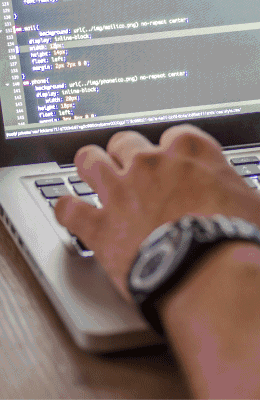Blog - News
Aug 13, 2019 | Read time 3 min
The Role of Digital Assistants in Business Environments
The rise of digital assistants continues to extend from the consumer domain to the business domain as the blurring between consumer and business grows, with people expecting the same functions at work that they have at home.
Recently, I read a blog by a former colleague of mine at Citrix, James Bulpin. The blog was titled ‘The future of the workplace virtual assistant‘ and addressed the consumer use of virtual assistants and how this trend is likely to extend into a commercial setting. In fact, the article cites from Gartner that
“25 percent of digital workers will use a virtual employee assistant (VEA) on a daily basis. This will be up from less than 2 percent in 2019.”
The rise of machines continues to extend
From the consumer domain to the business domain as the blurring between consumer and business grows, with people expecting the same functions at work that they have at home. Using personal devices at work was just the beginning and there are still many conversations about how that should be done. I will leave that for Citrix as that is firmly in their domain. I predict that we will start to see a move to having digital support for employees through assistants in the workplace, not just as a toy to turn on the lights, but as a serious productivity tool.
Work is not a place
As often quoted by Citrix, "work is no longer a place". More and more, people expect to be able to operate wherever they are: in a company office, at home, on a train, on a beach even. Digital assistants can be a key play here to enable this overtime, improving workflows and allowing focus on important tasks supported by artificial intelligence-powered tools. If humans are to get work done efficiently by using these digital assistants, then they need to operate alongside employees wherever work needs to be done.
Simple versions of digital assistants could support remote workers by continuing to operate from an office-based location. However, to truly support employees and take full advantage of the great opportunity that digital assistants present, they will need to move from a simple transactional model to being able to understand context from the environment, continuously learning and evolving. This will require more direct access to employees.
Ultimately, I think personal assistants are more likely to enable employees to focus on doing the parts of their jobs that require the most skill. They will get the most value out of employees and let them do the jobs they enjoy most and less of the day-to-day mundane tasks. People often worry that machines will take over in the workplace but actually, they are more likely to support employee growth and quality of work with a better work-life balance. After all, people do business with people and that’s not going to change.
Data is the future challenge
There is a key aspect here that needs serious consideration, something that recently is never too far from the headlines. That is personal data security and usage models. To have an assistant that is of value, it will need to have access to a wealth of information about tasks, behaviours, the needs of both the employees’ work and personal life while also be portable for their life. It will need to follow them from work to home, from laptops to phones and assistive devices, perhaps even from employer to employer as they travel through their careers.
With personal data being a key asset for both good and bad actors (intentionally or accidentally), where this knowledge is stored and how it’s allowed to be used, as well as a clear understanding of the ownership of this data, will be an interesting and important challenge for industry and people alike. This is a challenge that we are yet to resolve even with our personal profiles. Linking this with employee profiles adds yet further dimensions to these challenges.
Adapting for the future
We should absolutely embrace this trend to empower employees by providing great tools to support them through their careers. Planning how data travels with people and how it is used will continue to be something that needs careful thought across the whole industry.
Ian Firth, Speechmatics